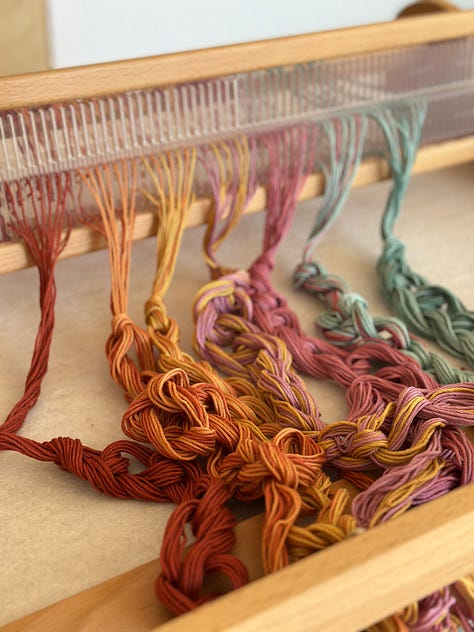
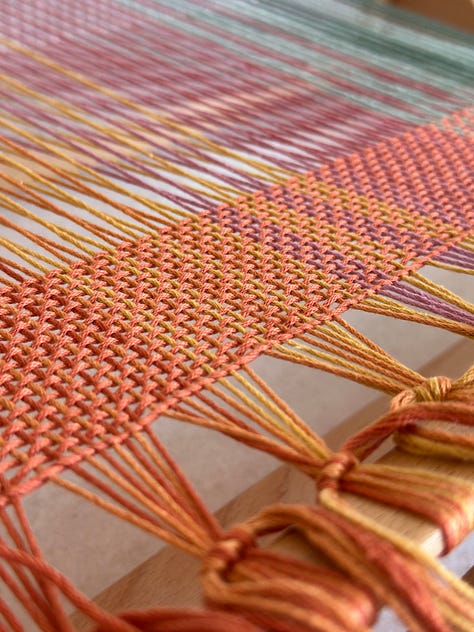
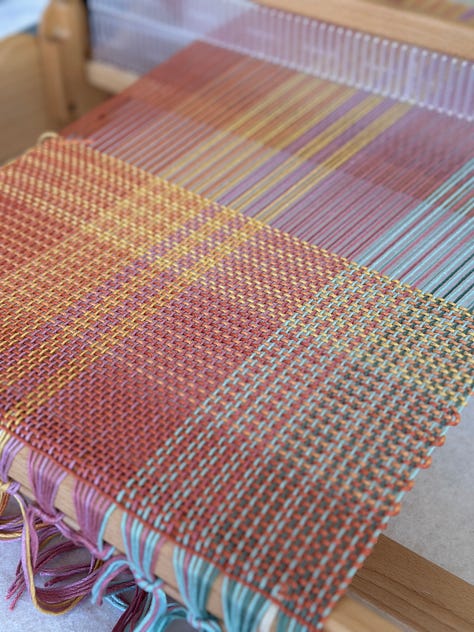
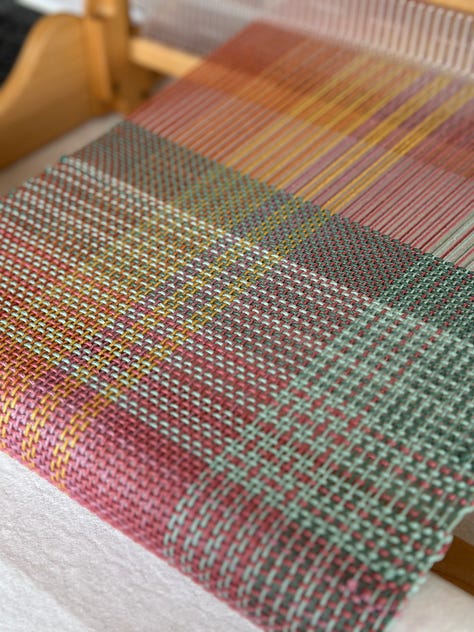
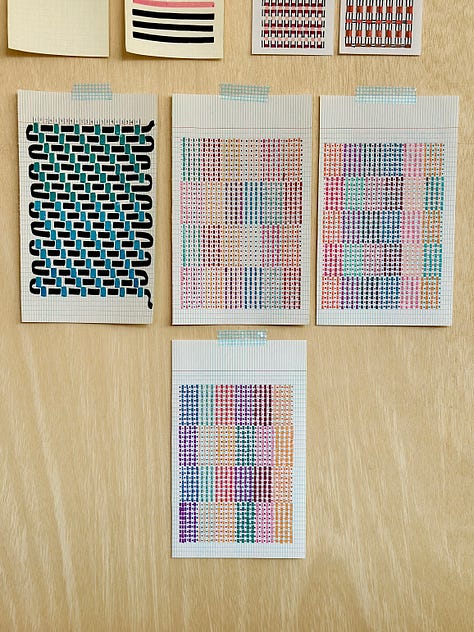
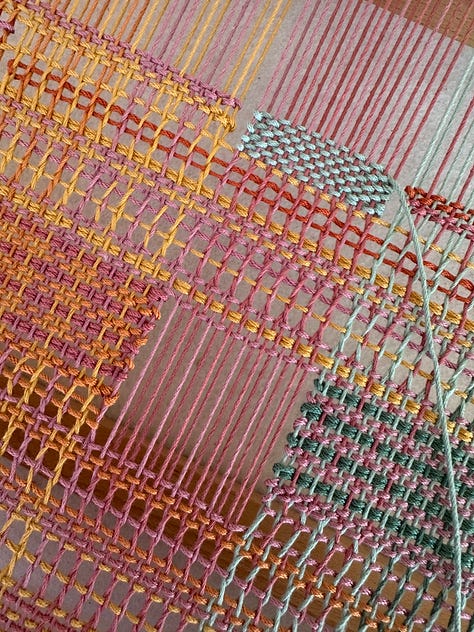
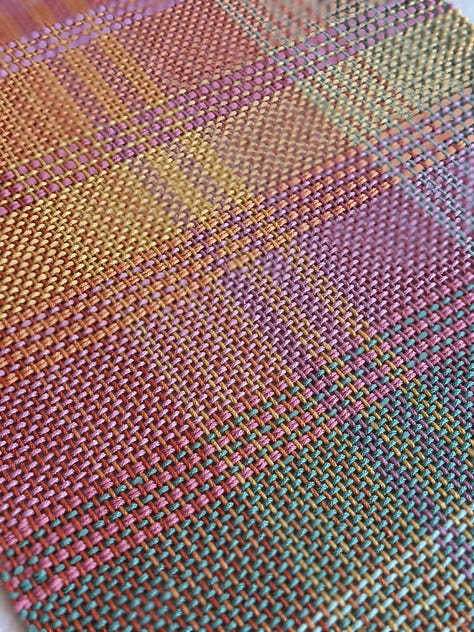
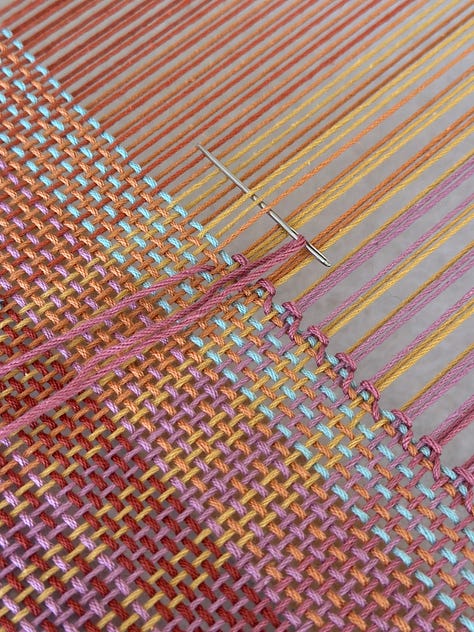
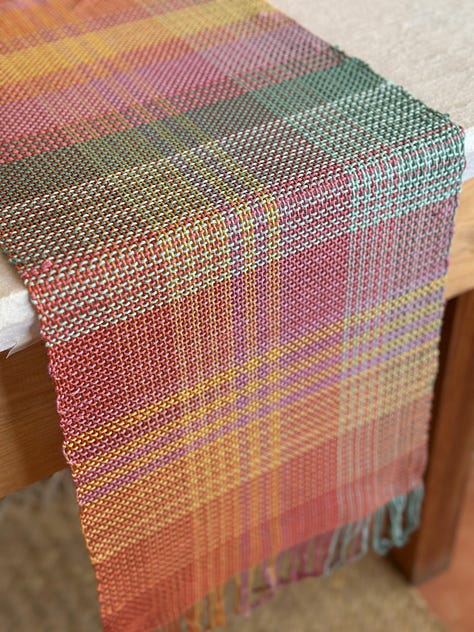
This summer, I’ll begin teaching weaving classes on both table looms and floor looms. I originally started weaving this sample piece simply as a class demonstration—but as soon as I began, it quickly turned into a personal therapy session. It helped me reconnect with my colorful identity, one that had been dormant after so many years living surrounded by the muted tones of the U.S.
During this same process of reconnecting with color, I came across some old sketchbook drawings—lines and dots simulating woven textures. When I saw them again, I realized: this fabric already existed inside me. I wasn’t inventing it from scratch—it was finally coming alive on the loom.
This piece also reminds me of the first one I ever wove, back when I started floor loom classes. I remember how each classmate selected their color palette and how much cultural diversity we had in the room. I remember thinking how each person was probably influenced by where they grew up. My Japanese classmates used mostly blues and greens, my Italian friend wove in browns and yellows, and many of the local students with black, white, and neutrals… Meanwhile, I just kept adding more and more color.
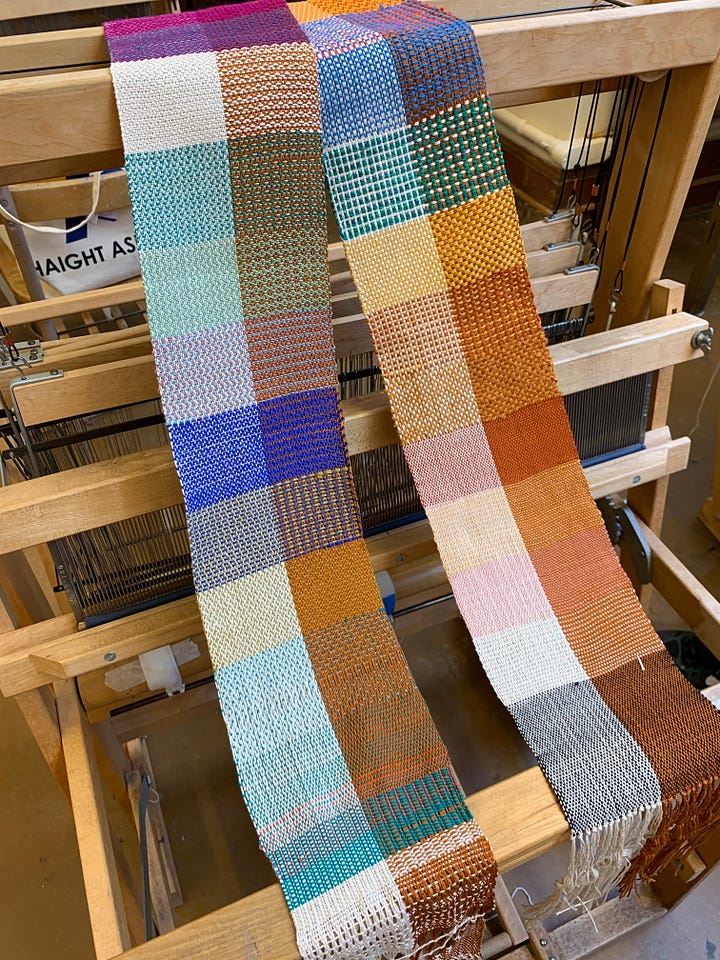

I had always wanted to learn how to weave, but in Guadalajara (where I grew up), there were no weaving schools or courses at the time. My weaving journey began in San Francisco. After living there for a few years, I discovered that the local community college offered three levels of floor loom weaving—and for free! I didn’t think twice.
I remember perfectly the first time I visited the school: an old brick building with the weaving studio tucked away in the attic, filled with looms of every kind, leaving barely enough room to walk. Light poured in through the roof windows, and the sound of people pedaling at their looms filled the space. I was instantly hooked—I knew I had to find a way to study there.
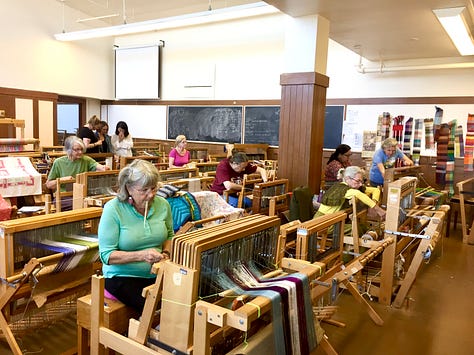
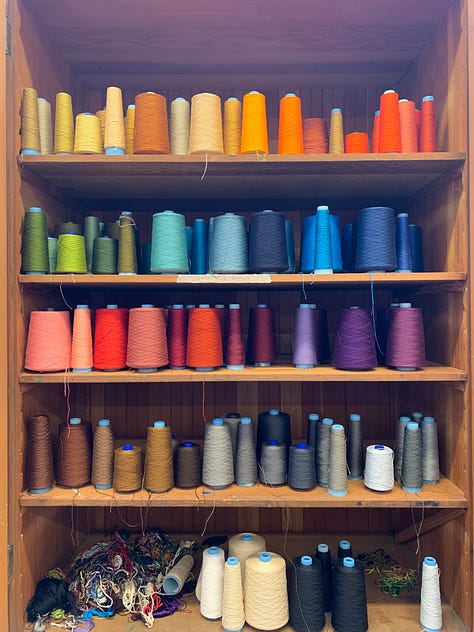
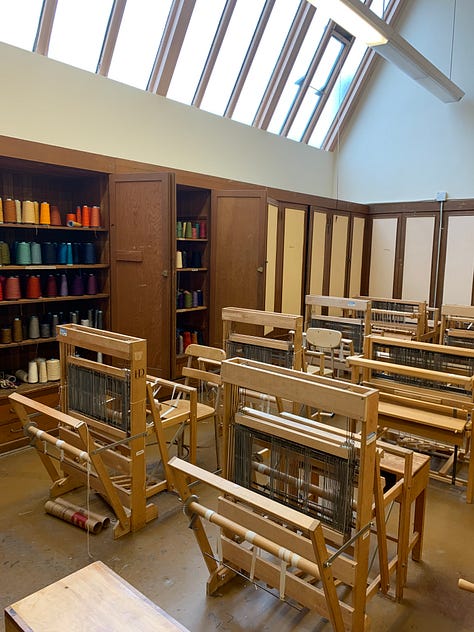
One semester later, just before a life-changing trip to Oaxaca, I was enrolled. That trip had filled me with inspiration—I wanted to learn to weave immediately. Although the first class was tough—my teacher had a thick East Coast accent I couldn’t understand, and all the weaving vocabulary was new to me—I fell in love with the very first woven line. I asked my teacher if I could record her, and I translated the videos at home to keep up with the lessons.
That teacher truly changed my life. She drove four hours each week from Mendocino just to teach us. And just when I was starting to feel comfortable, she announced her retirement—and that the entire textile department would be shut down to make room for more programming and tech classes. Classic San Francisco.
But here comes the beautiful part of the story.
She insisted the looms and materials be donated to the students. So at the end of the semester, I received a 40-year-old, 8-shaft Gilmore loom—an absolute gem! All the books and tools were raffled off, and I won a few Swedish weaving manuals that I still use today—even if I only understand the weaving drafts.
One of my favorite memories from that time was the day we had to clear out the studio. I asked a coworker who had a pickup truck to help me move my loom. When he arrived and saw how hard it was to carry the looms down from the attic, he called his cousin, and together they helped several of my classmates move their looms home. It was a long day, going back and forth from the school, loading and unloading looms—but I remember it with so much warmth and emotion. Each of us received our loom with the same awe and gratitude.
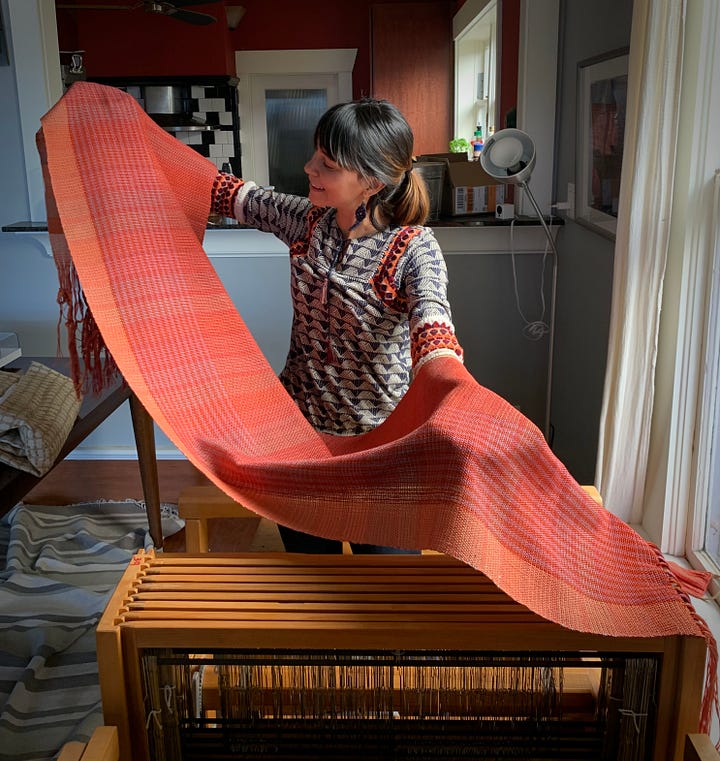
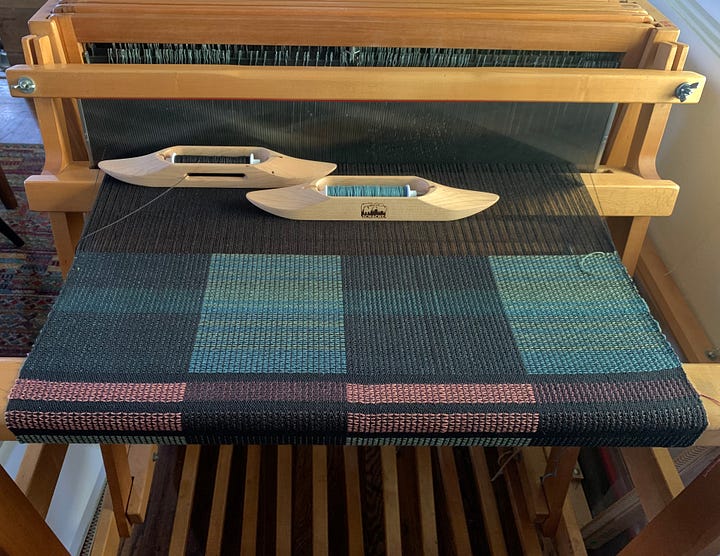
It’s been six years since that story. I now live in Oaxaca, dedicating all my time to textiles—there’s so much to learn here! This summer and fall, I’ll be teaching two workshops: one for beginners focused on Color and Weave, on a Table Loom, and another for more experienced weavers centered on pattern design using a 40-shaft AVL compu-dobby loom.
This sample I recently wove reconnected me with something essential. It reminded me of the joy of playing with color and brought me back to my roots—as when I used to design and sew bags for my old brand Turleza, more than 12 years ago.
I hope these classes become a space to share everything weaving has given me: connection with myself, with materials, with freedom, color, and community.
If you're interested in learning how to weave, feel free to message me and I’ll send you all the class details.

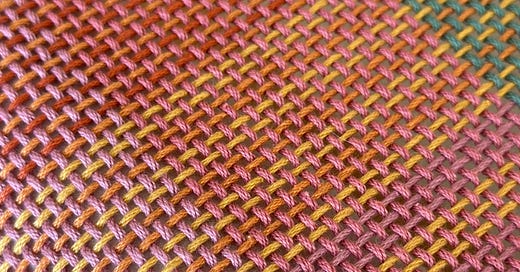


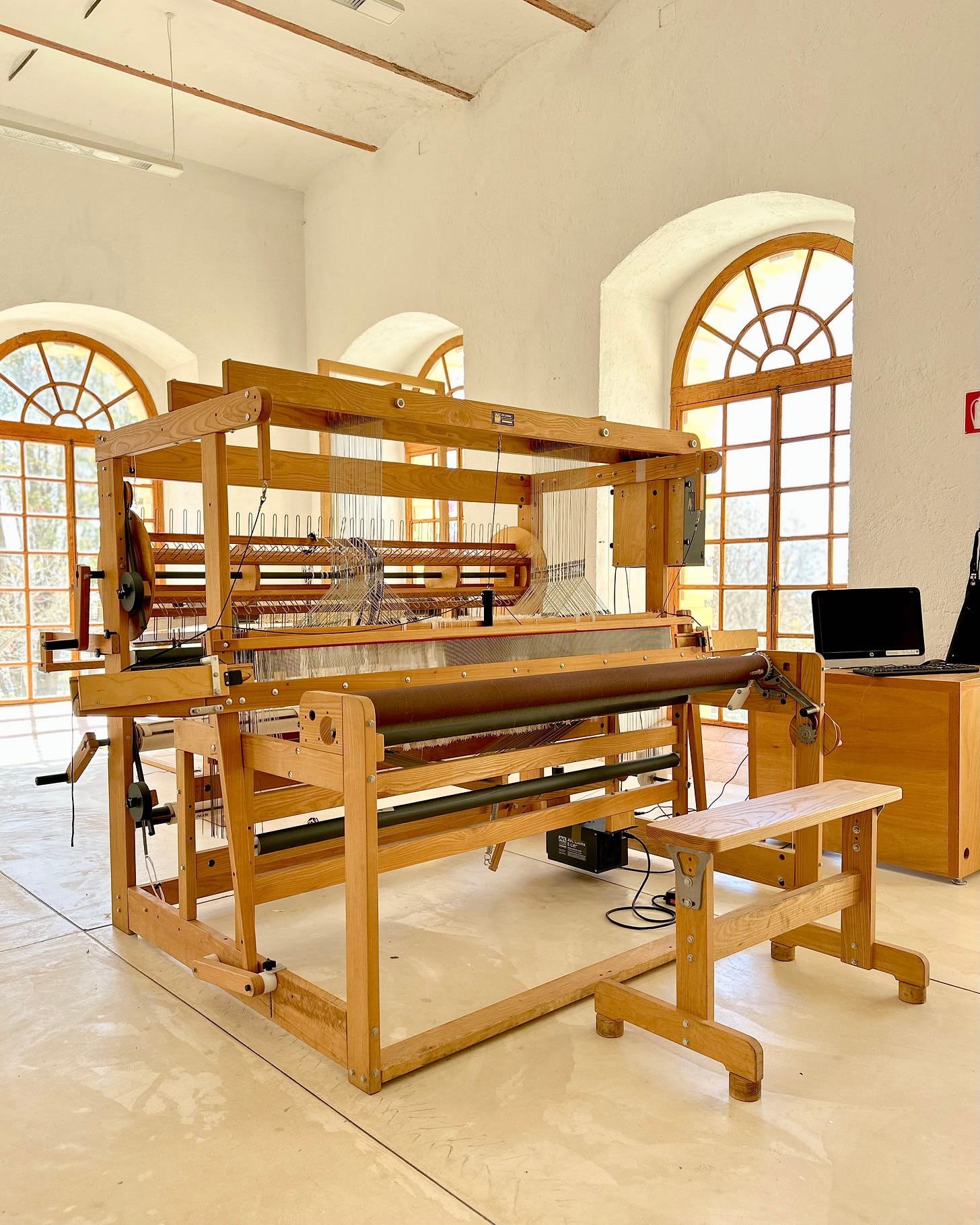
The Spanish version reads so much more poetic, but both posts are visually beautiful, Iris! I love the colors and the softness of both the words and the pictures. It's a very different experience from reading your husband's post, and I appreciate it.